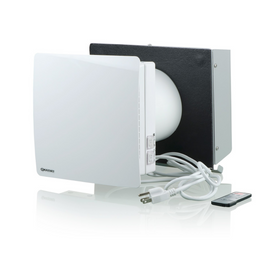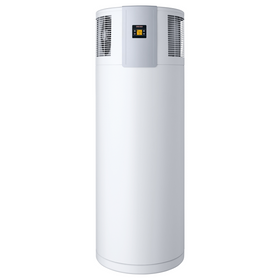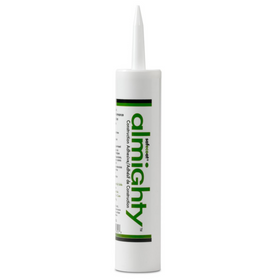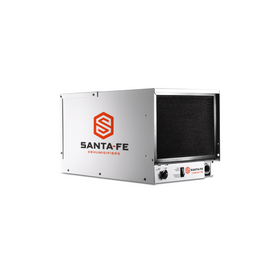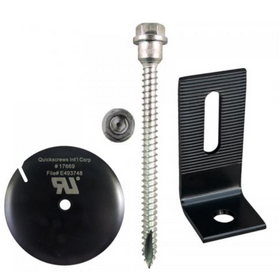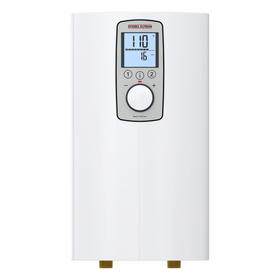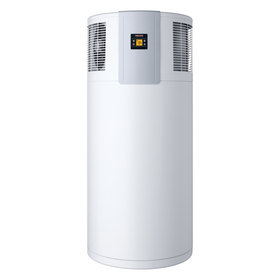
Wind Generation At Home
Last Updated: Mar 19, 2025The American Wind Energy Association (AWEA) states that in 2019, the United States added well over 9,000 megawatts of wind energy across the nation. During the first quarter of 2020, an additional 1,821 watts were added. In total, the US has over 107,000 megawatts of installed wind energy. Together with solar power, these renewable energy options are drastically changing the country's energy infrastructure as we move towards a low emissions future.
However, most people associate wind power with the massive turbines that dot the rural landscape in large wind farms owned by clean energy corporations. On the other hand, solar energy is most often thought of in small scale, residential rooftop installations. Like solar panels, wind energy can be suitable for individual homeowners. Today, Rise takes an in-depth look at why wind turbines might be a significant renewable energy option for people looking to reduce their carbon footprint while increasing the resiliency of their homes.
Table of Contents
- How Much Electricity Does A Home Wind Turbine Produce?
- Is My Home Suitable For A Wind Turbine?
- What Size Wind Turbine Do I Need For My Home?
- What Is The Best Wind Turbine For Home Use?
- How Much Does A Home Wind Turbine Cost?
- Where Can I Buy a Wind Turbine for My Home?
- How to Set Up Wind Turbine for Home Use
- How to Build a Wind Turbine for Home Use
- Are Wind Turbines Worth The Investment?

How Much Electricity Does A Home Wind Turbine Produce?
One of the biggest challenges that come with a transition to sustainable, renewable, low-emission energy sources is the intermittent and sporadic nature of renewable energies. The sun doesn't shine 24 hours a day, and overcast skies can be unpredictable, along with changing wind patterns. Fossil fuel sources of energy and electricity, however, are much more predictable. When the electrical grid requires more energy, all the big energy companies have to do is throw some more coal on the fire or burn a bit more natural gas.
Fortunately, renewable energy technologies are experiencing significant efficiency gains. According to the University Of Michigan Center for Sustainable Systems, wind turbines can extract around 50 percent of the energy that is carried by the wind that passes through the turbine's blades. The theoretical maximum efficiency for wind power is 59 percent. Improved designs of wind power will most likely allow wind power to approach that threshold in the coming years and decades. Improvements in battery storage technology are a fundamental piece of this puzzle. This continually improving technology is helping our society move toward low (or zero) carbon sources of energy.
All these factors improve the likelihood that wind turbines could produce a significant portion of the energy needed by individual households everywhere.
The actual amount of electricity that a wind turbine can provide for a family will depend on two main factors:
- The size of the wind turbine
- The amount of wind that is present.
Like solar panels, almost all wind turbines that are manufactured and marketed for residential use are measured in kilowatts (kW). A 10 kW wind turbine, for example, can generate an average of 10,000 kilowatt-hours per year. The Energy Information Administration (EIA) states that the average household used 10,972 kWh of electricity in 2018. In theory, a 10-kilowatt wind turbine should be able to offer the average family all the energy they need for yearly use.
Of course, the amount of wind present will dictate the actual energy output. Imagine a home located on a coastal bluff where mildly strong winds were present around the clock. A 10 kW wind turbine that produced the maximum amount of electricity for 24 hours a day and 365 days a year would be able to produce 87,600 kW annually. Conversely, long periods without any wind or only soft breezes would significantly lower the energy output. The kilowatt rating for wind turbines offers an estimation of the amount of energy that the turbine can produce.

Is My Home Suitable For A Wind Turbine?
How can homeowners know if their home site is adequate for a wind turbine? You need a reliable, steady source of wind. However, this can be hard to determine because wind speeds decrease as they approach the earth's surface. This is why the average height of most commercial wind turbines is 86 meters off the ground. Residential wind turbines will certainly not be that high, but merely raising the turbine 10-30 feet into the air can significantly increase the speed and frequency of winds that we might not even detect at ground level.
Resources for Learning About Wind In Your Region
Homeowners can find more information about how much wind energy they might be able to produce. The National Renewable Energy Laboratory (NREL) offers several helpful maps, geospatial data tools, and other resources. These can help you determine how much wind energy might be available, just a few feet above your roof.

In addition, hybrid solar and wind renewable energy systems allow homeowners to enjoy the best of both worlds. Winds can blow and produce energy both during the day and night, allowing homeowners to maximize the amount of renewable energy they can generate.
Other considerations that will impact the suitability for residential wind turbines include:
- Are there any zoning restrictions for wind turbines in your neighborhood or town?
- Is your property surrounded by large trees, buildings, or other impediments that might affect the prevailing winds?
- Is your property/yard large enough for you to place a turbine in an area that will not affect other areas of your home?
What Size Wind Turbine Do I Need For My Home?
If you feel that a wind turbine is the best option for your renewable energy needs, how do you go about correctly sizing the system? Firstly, you need to know your average monthly electricity consumption in kWh. Your energy consumption can easily be found on your utility bill. Second, finding ways to increase the energy efficiency of your home will reduce your total energy consumption. This conservation will allow you to source a smaller (and less expensive) wind turbine. Check out these simple energy efficiency tips that can be put into practice by any home.
Again, the best-sized wind turbine for your home will depend on several factors. As a general rule of thumb, a 1.5 kW wind turbine should meet the necessary energy needs for homes that use an average of 300 kWh or less, and that receive 14 MPH average annual wind speed. If your home uses 900 kWh of electricity each month, you can expect to need a 4.5 to 5 kW system. You can adjust this calculation based on the average annual wind speed in your area. The NOAA offers a helpful, national wind speed map that can be accessed here.
What Is The Best Wind Turbine For Home Use?
There are dozens of companies manufacturing and marketing wind turbines for the residential energy market. Some of the top manufacturers to research include:

Automaxx
This company makes a great, standard 1,500-watt wind turbine generator kit that is a good starting point for any residential wind turbine system.

Tumo-INT
This manufacturer makes excellent residential kits that are surprisingly affordable. Their 1,000-watt turbine costs less than $1,000 on Amazon.

Windmax
Windmax is another of the top companies selling residential wind turbines. Their 500-watt turbine is under $700.
How Much Does A Home Wind Turbine Cost?
We mentioned a few prices above. However, the cost of installation will vary due to several factors. These include the size of the system, height of the mounting pole, etc. Windustry.org reports that residential wind turbines will have an installed cost between $3,000 to $8,000 per kilowatt of capacity. A 3 kW system, then could cost somewhere between $9,000 and $24,000.
Where Can I Buy a Wind Turbine for My Home?
Fortunately, wind turbines can be easily found and purchased. Besides the manufacturers we mentioned above, major retailers such as Home Depot have a relatively large selection of home wind turbines. Depending on your area, they might even offer low-cost installation. In addition, you can find a wide variety on Amazon. If you are looking for a larger wind turbine that will function as the primary source of renewable energy for your home (units over 5 kW), it is probably best to go directly through the manufacturer. You can search for a list of worldwide wind turbine manufacturers here.
How to Set Up Wind Turbine for Home Use
In most cases, installing a wind turbine for residential renewable energy will require a professional installer. Besides mounting the turbine, there is extensive electrical work required, including installing the inverter. If you feel up for the challenge of self-installing your turbine, the United States Department of Energy offers a detailed guide for wind turbine installation that you can find here.
How to Build a Wind Turbine for Home Use
Handy homeowners looking for a challenging DIY project could build small wind turbines from recycled materials that you might have stored away in your garage. These DIY wind turbines will most likely not be able to power your entire home. Still, you could use them for charging certain appliances or tools, or other small scale uses.
One of the most innovative ways to build your own wind turbine is by repurposing an old car alternator. Check out this YouTube tutorial on how to make a car alternator wind turbine at home.

Are Wind Turbines Worth The Investment?
As we move towards a low carbon future, decentralized renewable energy sources should be a priority for every environmentally aware homeowner. Rooftop solar panels have rightfully been one of the main focuses of renewable energy on a household scale. However, residential wind turbines offer a straightforward path towards autonomous, zero-emission electricity for homes. While the final installed cost of wind turbines might be a bit higher than solar panels, the improved efficiency of wind turbines will most likely make them the best option for homeowners who live in areas with regular, steady winds.
Tobias Roberts
Tobias runs an agroecology farm and a natural building collective in the mountains of El Salvador. He specializes in earthen construction methods and uses permaculture design methods to integrate structures into the sustainability of the landscape.

